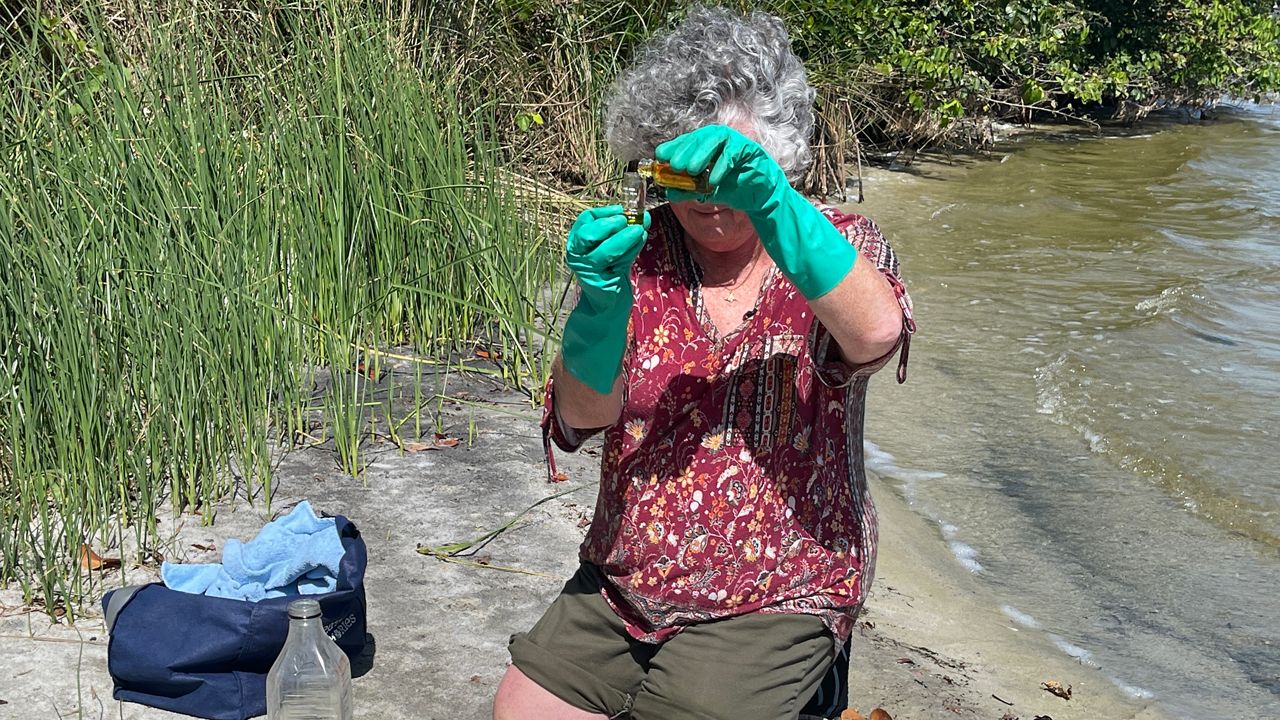BREVARD COUNTY, Fla. — A new report on the health of the Indian River Lagoon shows a troubling trend.
Analysis from the nonprofit group Marine Resources Council (MRC) shows that water quality is improving, but despite that, seagrass is dying and not growing back. It's puzzling for them.
Spectrum News 13 followed along with MRC Lagoon Watch coordinator Kara Woods on the banks of the river as she tested the water.

"The water clarity is good today. I can see all the way down to the bottom of the lagoon," Woods explained.
The lagoon's 2020 report card is more troubling than ever.
The 156-mile waterway just received an F minus minus for Health Habitat score measured by seagrass health at a time when FWC says record numbers of manatees are dying.
"The seagrass is still in dire shape. That there's still a lot going into the lagoon we just don't know about," said Woods.
The state of Florida is focusing on two nutrients entering the lagoon: nitrous and phosphorus.
MRC's new goal is to expand current water quality testing. Data will come from the 10 major tributaries discharging into the lagoon. The samples will be tested for herbicides and toxins, which is not going on right now.
"Taking 10 samples from every tributary that's coming into the lagoon, running them for all the herbicides we can think of, and answering that question," said MRC Executive Director Leesa Souto. "Are herbicides entering the lagoon that can be harmful to seagrasses?"
The testing doesn't come cheap. The herbicide test costs $1,000 each. So, MRC needs the public to help.
"To figure it out, we have to do more testing," Woods said. "More understanding, more learning."
The disappearance of seagrass has led the FWC to supplement the diet of manatees this year.
Spectrum News 13 reached out to the state about why it takes so long for them to release water quality results and we are waiting to hear back.



